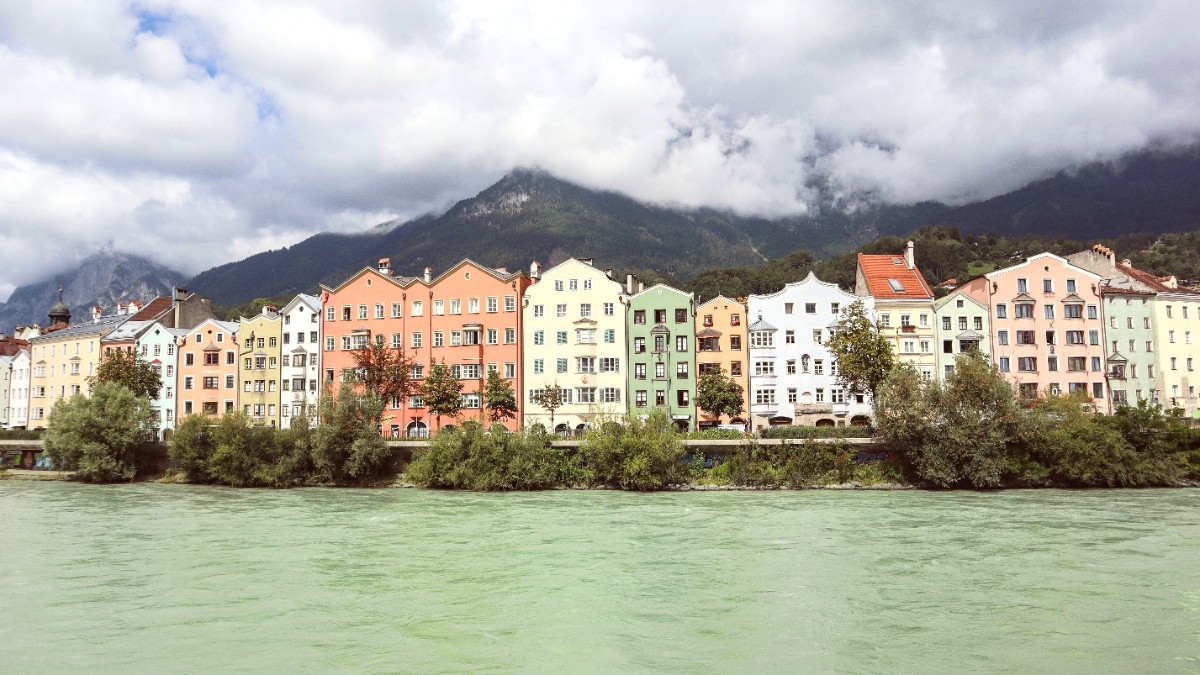
Tirol, Austria
Tyrolean cuisine shows the region's mountainous terrain and agricultural traditions. Dishes are substantial and flavorful, using potatoes, dumplings, and cured meats. Neighboring countries, especially Italy, influence some dishes.
Pork, beef, potatoes, cabbage, and cheese are staple ingredients. Grey Cheese (Graukäse) is a local specialty. Flavors are savory, often rich and earthy. Common spices include caraway, marjoram, and parsley. Smoked meats like Speck add distinct flavors.
A typical Tyrolean meal often focuses on a main course. Soups and salads are common starters.
Desserts, especially those with fruit or dough, are popular. They are often served as a separate course or a light meal.
Many restaurants have a set lunch menu at a reduced price during weekdays. This offers a way to experience local cuisine economically.
A pan-fried dish with chopped potatoes, onions, and leftover meat, topped with a fried egg.
Found in traditional Gasthäuser.
A fluffy, shredded, caramelized pancake, served with apple sauce or plum compote.
Many traditional restaurants and cafes.
A thin, breaded, pan-fried cutlet of veal or pork, with lemon and potato salad or fries.
Widely available throughout Innsbruck.
Almdudler (herbal lemonade), local beers (Stiegl, Gösser), Austrian wines (Grüner Veltliner, Zweigelt), Schnaps (fruit brandies).
Kiachl (fried dough pastries, sweet or savory), Topfenstrudel (quark-filled strudel).
For high-end dining experiences with modern or gourmet Tyrolean cuisine.
Traditional and contemporary options with good value.
Affordable options for quick and fresh meals.
Innsbruck has a selection of international restaurants, including Italian, Asian (Chinese, Thai, Japanese), Indian, and Turkish.
These are mostly around the city center and the main train station.
Halal and kosher options are limited and may need specific research. Some international restaurants, like Turkish establishments, might have halal meat.
Always best to inquire directly.
Widely available in most restaurants.
Increasingly common, especially in larger restaurants, may need inquiry.
Awareness is growing. Larger restaurants often accommodate requests.
Communicate needs clearly. A Translation card for severe allergies is recommended.
Christmas Markets: A wide array of seasonal food and drink, Glühwein, roasted chestnuts, gingerbread.
Autumn Harvest Festivals: Local villages celebrate with regional specialties, music, and customs.
Dining at Bergisel Ski Jump: The "Bergisel Sky" restaurant has panoramic views. Mountain Huts: Dining at a traditional mountain hut (e.g., Arzler Alm) combines a scenic hike with hearty Tyrolean fare.
These provide an authentic alpine dining experience.
Many traditional Gasthäuser have large tables. Stiftskeller accommodates groups well with its lively atmosphere.
Most traditional restaurants are family-friendly. Look for places with outdoor seating or simple menus.
Enjoy local brews and hearty meals in lively settings. A strong beer culture is present in Austria.
Many restaurants feature fresh trout from mountain streams and seasonal game dishes.
Some eateries prioritize ingredients from local farms for fresh, regional flavors.
Discover excellent Austrian wines in intimate wine bars. Grüner Veltliner is a must-try white wine.
Perfect for an evening of relaxation.
Some fine dining establishments have multi-course tasting menus, a culinary journey.
Reservations are highly recommended for these experiences.
Many restaurants close between lunch and dinner service. Confirm hours before you go.
While cards are widely accepted, some smaller establishments may prefer cash. It is good to have some Euros on hand.
English is commonly spoken in tourist areas, but learning a few German phrases ("Danke", "Bitte", "Zahlen bitte") is appreciated.
Christmas Markets: A culinary delight with Glühwein (mulled wine), roasted chestnuts (Maroni), Lebkuchen (gingerbread), and Kartoffelpuffer (potato pancakes).